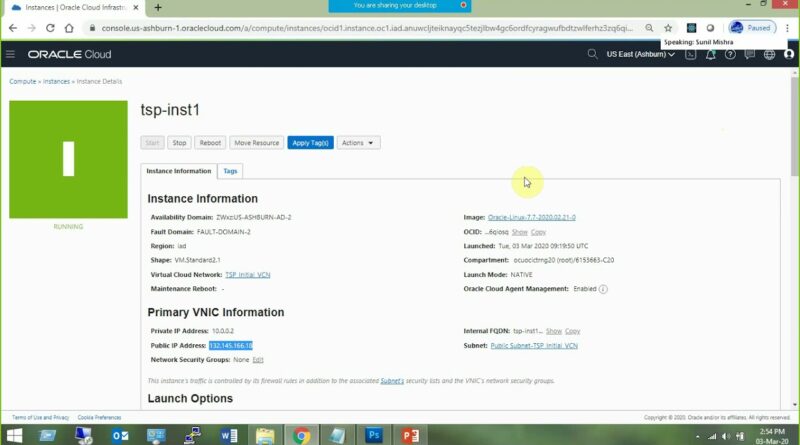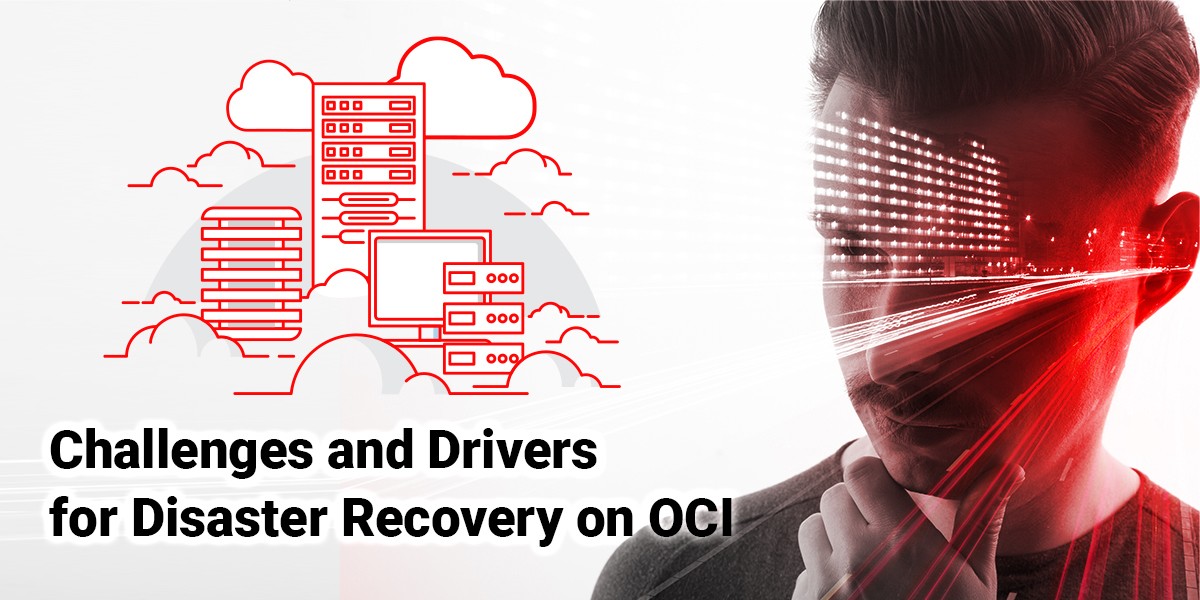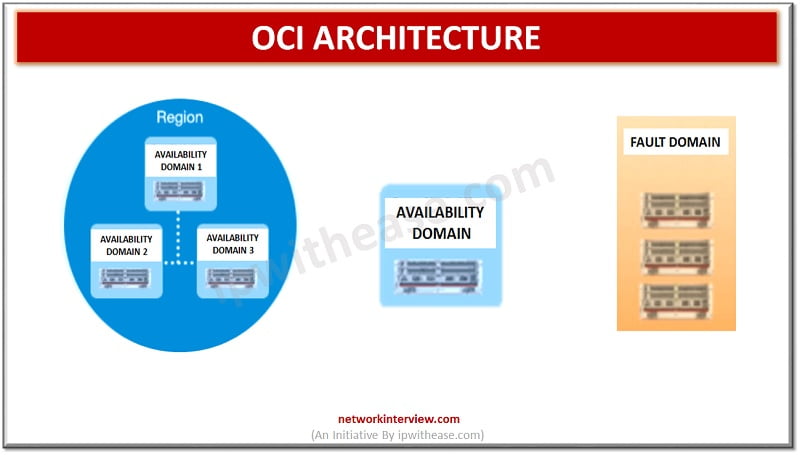What is OCI: An Overview of Oracle Cloud Infrastructure
Oracle Cloud Infrastructure (OCI) is a comprehensive cloud computing service offered by Oracle Corporation. As an infrastructure as a service (IaaS) provider, OCI offers a wide range of services such as compute, storage, networking, and database services, along with many other application services. The platform is designed to provide businesses with flexible and scalable computing resources, enabling them to drive innovation and growth.
At its core, OCI is a cloud-based platform that offers on-demand access to computing resources. This means that businesses can quickly and easily provision computing resources, such as virtual machines, bare metal servers, and container instances, as needed. OCI’s compute services provide businesses with the flexibility to choose the right computing environment for their workloads, whether it’s a scalable and secure virtual machine or a dedicated bare metal server.
OCI’s storage services offer businesses a range of storage options, including block, file, and object storage. These storage options are designed to meet the specific needs of different workloads. For instance, block storage is ideal for high-performance workloads, while object storage is designed for storing large amounts of unstructured data, such as images, videos, and backups.
One of the key differentiators of OCI is its networking capabilities. OCI’s networking services provide businesses with high-speed, low-latency connectivity, making it an ideal choice for data-intensive workloads. Additionally, OCI’s security features are designed to meet the most stringent compliance requirements, providing businesses with peace of mind.
In summary, OCI is a powerful cloud computing service that provides businesses with flexible and scalable computing resources. By understanding the core components of OCI and following best practices, businesses can leverage OCI’s capabilities to drive innovation and growth. Whether it’s for disaster recovery, big data and analytics, or running applications in the cloud, OCI is an ideal choice for businesses of all sizes.
How OCI Differs from Other Cloud Providers: Unique Features and Benefits
Oracle Cloud Infrastructure (OCI) stands out from other cloud providers in several ways. One of the key differentiators is its performance. OCI offers high-performance computing resources, providing businesses with the power they need to run their applications and workloads efficiently. Additionally, OCI’s networking capabilities provide high-bandwidth, low-latency connectivity, making it an ideal choice for data-intensive workloads.
Another way that OCI differs from other cloud providers is its security. OCI’s security features are designed to meet the most stringent compliance requirements, providing businesses with peace of mind. With features such as virtual cloud networks, security lists, and identity and access management, businesses can ensure that their OCI environment is secure.
Cost-effectiveness is another area where OCI shines. OCI offers a unique combination of performance, security, and cost-effectiveness, making it an attractive option for businesses of all sizes. With flexible pricing models and the ability to scale computing resources up and down as needed, businesses can optimize their cloud spending and avoid overspending.
In summary, OCI differs from other cloud providers in several ways, including performance, security, and cost-effectiveness. By choosing OCI, businesses can leverage its unique features and benefits to drive innovation and growth. Whether it’s for running applications in the cloud, big data and analytics, or disaster recovery, OCI is an ideal choice for businesses of all sizes.
Compute Services: The Heart of OCI
Compute services are at the heart of Oracle Cloud Infrastructure (OCI). These services provide businesses with flexible and scalable computing resources, enabling them to run their applications and workloads in the cloud. With OCI’s compute services, businesses can choose from a range of options, including virtual machines, bare metal servers, and container instances.
Virtual machines (VMs) are a popular choice for many businesses. VMs offer a scalable and secure computing environment, enabling businesses to quickly and easily provision computing resources as needed. With OCI’s VM service, businesses can choose from a range of pre-built images or create their own custom images, providing them with the flexibility they need to meet their specific requirements.
For businesses that require dedicated hardware resources, OCI’s bare metal servers are an ideal choice. Bare metal servers provide businesses with direct access to the underlying hardware, enabling them to run workloads that require high levels of performance and security. With OCI’s bare metal server service, businesses can choose from a range of pre-built configurations or create their own custom configurations, providing them with the flexibility they need to meet their specific requirements.
Container instances are another option for businesses looking to leverage OCI’s compute services. Container instances allow businesses to run applications in containers, providing a lightweight and portable computing environment. With OCI’s container instance service, businesses can quickly and easily provision container instances, enabling them to develop and deploy applications in the cloud.
In summary, OCI’s compute services provide businesses with a range of options for running their applications and workloads in the cloud. Whether it’s virtual machines, bare metal servers, or container instances, businesses can choose the right computing environment for their specific requirements, enabling them to drive innovation and growth.
Storage Services: Scalable and Secure Data Storage with OCI
Oracle Cloud Infrastructure (OCI) offers a range of storage services that provide businesses with scalable and secure data storage options. These services include block, file, and object storage, each designed to meet the specific needs of different workloads and use cases.
Block storage is ideal for high-performance workloads that require low-latency access to data. With OCI’s block storage service, businesses can create and manage block volumes, which can be attached to compute instances for flexible and scalable storage. OCI’s block storage service offers high availability, automatic backups, and data protection features, ensuring that businesses can rely on their storage infrastructure for mission-critical workloads.
File storage is suitable for shared file systems and workloads that require network-attached storage (NAS). With OCI’s file storage service, businesses can create and manage file systems that can be accessed from multiple compute instances. OCI’s file storage service offers high availability, automatic backups, and data protection features, ensuring that businesses can rely on their storage infrastructure for mission-critical workloads.
Object storage, on the other hand, is designed for storing large amounts of unstructured data, such as images, videos, and backups. With OCI’s object storage service, businesses can store and retrieve objects using a simple API. OCI’s object storage service offers high durability, scalability, and cost-effectiveness, making it an ideal choice for storing large amounts of data.
In summary, OCI’s storage services provide businesses with a range of options for scalable and secure data storage. Whether it’s block, file, or object storage, businesses can choose the right storage option for their specific requirements, enabling them to store and manage their data with confidence.
Networking Services: High-Speed, Low-Latency Connectivity with OCI
Oracle Cloud Infrastructure (OCI) offers a range of networking services that provide businesses with high-speed, low-latency connectivity. These services include virtual cloud networks, load balancers, and fast connect, each designed to meet the specific needs of different workloads and use cases.
Virtual cloud networks (VCNs) allow businesses to create isolated networks in the cloud. With VCNs, businesses can define their own subnets, route tables, and security rules, providing them with fine-grained control over their network traffic. VCNs also offer high-bandwidth, low-latency connectivity, making them an ideal choice for data-intensive workloads.
Load balancers, on the other hand, distribute traffic across multiple instances, ensuring high availability and fault tolerance. With OCI’s load balancer service, businesses can distribute traffic across multiple compute instances, ensuring that their applications are always available and responsive.
Fast connect provides businesses with a dedicated network connection to OCI, offering high-speed, low-latency connectivity. With fast connect, businesses can create a private network connection between their on-premises data centers and OCI, providing them with seamless connectivity and secure data transfer.
In summary, OCI’s networking services provide businesses with a range of options for high-speed, low-latency connectivity. Whether it’s virtual cloud networks, load balancers, or fast connect, businesses can choose the right networking option for their specific requirements, enabling them to build and deploy applications with confidence.
Disaster Recovery with OCI: Protecting Your Business-Critical Data and Applications
Oracle Cloud Infrastructure (OCI) offers robust disaster recovery capabilities that enable businesses to protect their data and applications from unexpected disruptions. With OCI, businesses can replicate their data and applications to a secondary site, ensuring business continuity in the event of a disaster.
OCI’s low-latency connectivity and high-performance computing resources make it an ideal choice for disaster recovery. By replicating data and applications to OCI, businesses can ensure that they can quickly and easily recover their data and applications in the event of a disaster, minimizing downtime and reducing the impact on their operations.
OCI’s disaster recovery capabilities are also cost-effective. Businesses can choose from a range of disaster recovery options, including standby databases, backup and recovery, and disaster recovery as a service (DRaaS). By choosing the right disaster recovery option for their specific requirements, businesses can ensure that they are getting the best value for their investment.
When implementing disaster recovery with OCI, it’s essential to follow best practices to ensure optimal performance and security. These best practices include regularly testing disaster recovery plans, using virtual cloud networks to isolate networks, and using security lists to control traffic. By following these best practices, businesses can ensure that their disaster recovery environment is secure and performant.
In summary, OCI’s disaster recovery capabilities provide businesses with a cost-effective and reliable way to protect their data and applications. By replicating data and applications to OCI, businesses can ensure business continuity in the event of a disaster, minimizing downtime and reducing the impact on their operations.
Big Data and Analytics with OCI: Unlocking Insights from Large Amounts of Data
Oracle Cloud Infrastructure (OCI) offers robust big data and analytics capabilities that enable businesses to analyze large amounts of data and gain insights that can drive innovation and growth. With OCI, businesses can process and analyze data in real-time, providing them with the ability to make informed decisions quickly.
OCI’s high-performance computing resources and scalable storage options make it an ideal choice for big data and analytics workloads. Businesses can choose from a range of data processing and analytics services, including Apache Spark, Apache Kafka, and Apache Hive, providing them with the flexibility to choose the right tool for their specific requirements.
OCI’s big data and analytics capabilities also provide businesses with the ability to unlock insights from unstructured data, such as images, videos, and social media data. By using OCI’s object storage service, businesses can store and analyze large amounts of unstructured data, providing them with a more complete view of their data and enabling them to make more informed decisions.
When implementing big data and analytics with OCI, it’s essential to follow best practices to ensure optimal performance and security. These best practices include using virtual cloud networks to isolate networks, using security lists to control traffic, and using monitoring and logging to track usage and performance. By following these best practices, businesses can ensure that their OCI environment is secure and performant.
In summary, OCI’s big data and analytics capabilities provide businesses with the tools they need to analyze large amounts of data and gain insights that can drive innovation and growth. By using OCI’s data processing and analytics services, businesses can process and analyze data in real-time, providing them with the ability to make informed decisions quickly.
How to Get Started with OCI: A Comprehensive Guide
Oracle Cloud Infrastructure (OCI) is a powerful cloud computing service that provides businesses with flexible and scalable computing resources. If you’re wondering what is OCI, it is a cloud computing service offered by Oracle Corporation that provides infrastructure as a service (IaaS). OCI offers a range of services such as compute, storage, networking, and database services, along with many other application services. Getting started with OCI is easy, and Oracle provides a range of resources to help businesses get up and running quickly.
To get started with OCI, the first step is to create an account with Oracle. This can be done by visiting the Oracle Cloud website and following the prompts to create an account. Once you have created an account, you can log in and start exploring the OCI services.
Oracle provides a range of documentation and tutorials to help businesses get started with OCI. The documentation includes step-by-step guides, best practices, and technical references to help you understand how to use OCI effectively. The tutorials provide hands-on experience with OCI, allowing you to learn by doing.
In addition to the documentation and tutorials, Oracle also provides a free trial of OCI. The free trial allows you to try out OCI services for free for a limited time, giving you the opportunity to explore the capabilities of OCI without incurring any costs.
When getting started with OCI, it’s essential to follow best practices to ensure optimal performance and security. These best practices include using virtual cloud networks to isolate networks, using security lists to control traffic, and using monitoring and logging to track usage and performance. By following these best practices, businesses can ensure that their OCI environment is secure and performant.
In summary, getting started with OCI is easy, and Oracle provides a range of resources to help businesses get up and running quickly. By creating an account, exploring the documentation and tutorials, and taking advantage of the free trial, businesses can quickly and easily create their first OCI environment. When using OCI, it’s essential to follow best practices to ensure optimal performance and security.
Best Practices for Using Oracle Cloud Infrastructure (OCI)
Oracle Cloud Infrastructure (OCI) is a powerful cloud computing service that provides businesses with flexible and scalable computing resources. To ensure optimal performance and security, it’s essential to follow best practices when using OCI. Here are some best practices to keep in mind:
Use Virtual Cloud Networks (VCNs) to Isolate Networks: VCNs allow businesses to create isolated networks in the cloud, providing an additional layer of security. By using VCNs, businesses can segment their network traffic, reducing the risk of unauthorized access.
Use Security Lists to Control Traffic: Security lists are rules that control inbound and outbound traffic to and from network resources. By using security lists, businesses can ensure that only authorized traffic is allowed to flow to and from their resources.
Use Monitoring and Logging to Track Usage and Performance: Monitoring and logging provide businesses with insights into their OCI usage and performance. By using monitoring and logging tools, businesses can track usage, identify performance issues, and troubleshoot problems.
Use Identity and Access Management (IAM) to Control Access: IAM allows businesses to control who has access to their OCI resources. By using IAM, businesses can ensure that only authorized users have access to their resources, reducing the risk of unauthorized access.
Use Backup and Disaster Recovery Solutions: Backup and disaster recovery solutions provide businesses with a way to protect their data and applications. By using backup and disaster recovery solutions, businesses can ensure that their data and applications are protected in the event of a disaster.
Use Load Balancers to Distribute Traffic: Load balancers distribute traffic across multiple instances, ensuring high availability. By using load balancers, businesses can ensure that their applications are always available, even in the event of a failure.
Use Container Instances for Lightweight and Portable Computing: Container instances allow businesses to run applications in containers, providing a lightweight and portable computing environment. By using container instances, businesses can reduce the overhead of managing virtual machines and improve the portability of their applications.
In conclusion, following best practices when using OCI is essential to ensure optimal performance and security. By using VCNs, security lists, monitoring and logging, IAM, backup and disaster recovery solutions, load balancers, and container instances, businesses can leverage the full capabilities of OCI while ensuring that their resources are secure and performant.








